Abstract
1. The pharmacological properties of the ATP-activated conductance in isolated sensory neurones of the rat were investigated by use of voltage clamp and concentration clamp techniques. 2. Adenosine 5'-triphosphate (ATP), adenosine 5'-diphosphate (ADP), cytidine 5'-triphosphate (CTP), cytidine 5'-diphosphate (CDP) and some derivatives activate these receptors, whereas adenosine 5'-monophosphate (AMP), cytidine 5'-monophosphate (CMP) and other naturally-occurring nucleotides are competitive blockers. 3. In the sequence of substances, adenosine 5'-(beta,gamma-methylene)-triphosphonate (APPCP), adenosine 5'-(beta,gamma-difluoromethylene)- triphosphonate (APPCF2P), adenosine 5'-(beta,gamma-dichloromethylene)-triphosphonate (APPCC12P) and adenosine 5'-(beta,gamma-dibromomethylene)triphosphonate (APPCBr2P), the properties of ligands depend on the radius of the atom linked to the carbon of the diphosphonate group. Thus, APPCP is an agonist, APPCF2P is a partial agonist, while dichloromethylene and dibromomethylene analogues of adenosine 5'-(beta,gamma-methylene)triphosphonate demonstrate features of competitive blockers. APPCC12P is the most effective blocker of ATP-receptors (inhibition constant Ki = 21 +/- 4 microM). An adenosyl or adenylyl radical, when connected to the terminal phosphate of ATP, converts the agonist into a partial agonist. 4. Two especially important parts of the ATP molecule are crucial for the interactions with receptors. They are: (1) the vicinity of C6 of the purine ring and (2) the polyphosphate chain. Some modifications in these regions of the molecule result in the transformation of an agonist into an antagonist.
Full text
PDF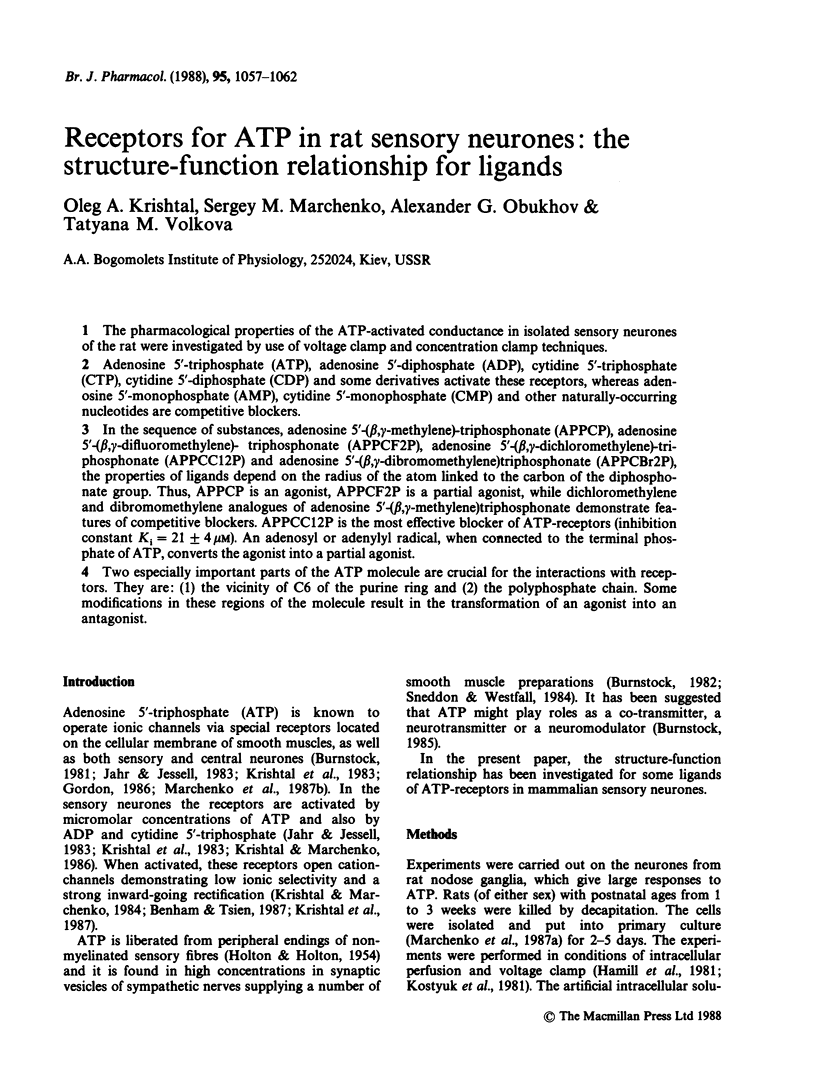
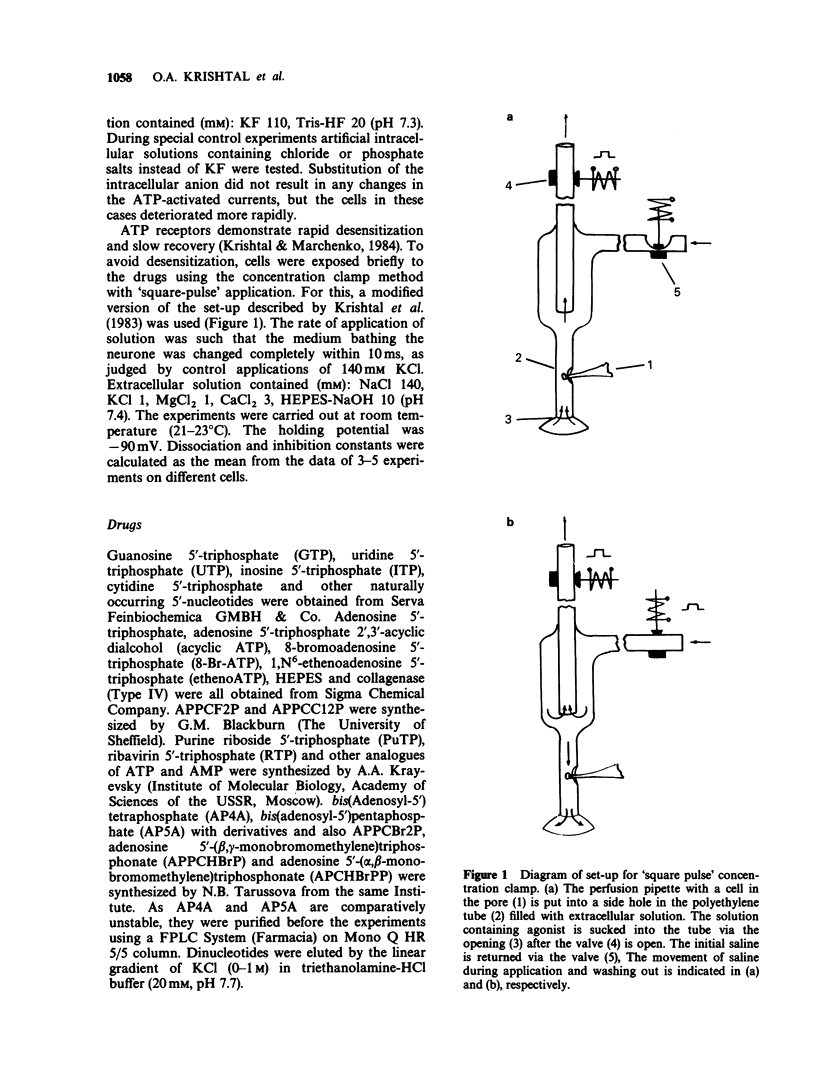
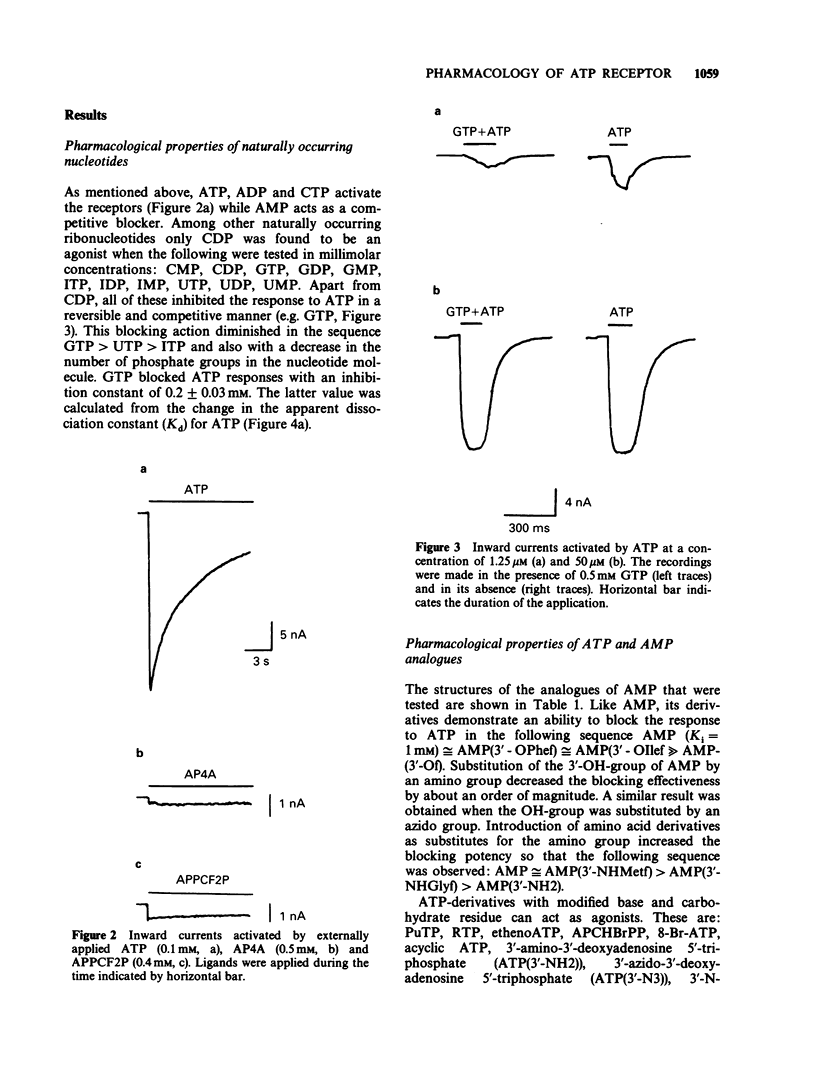
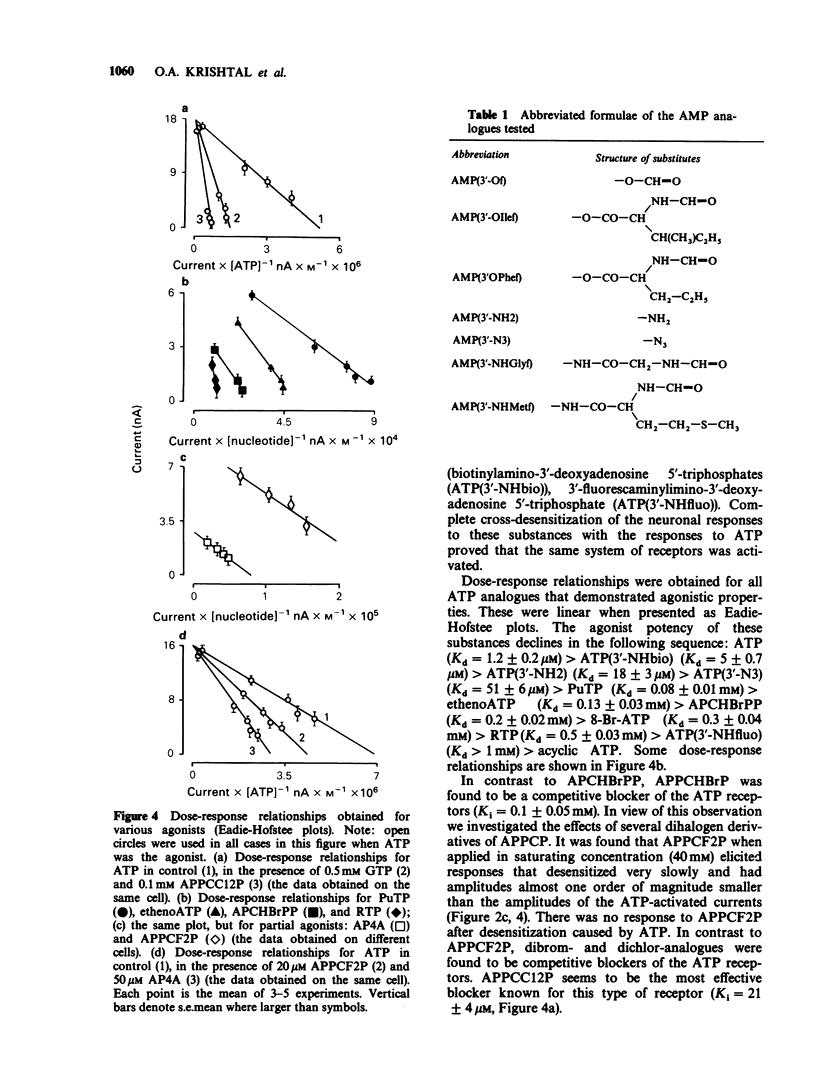
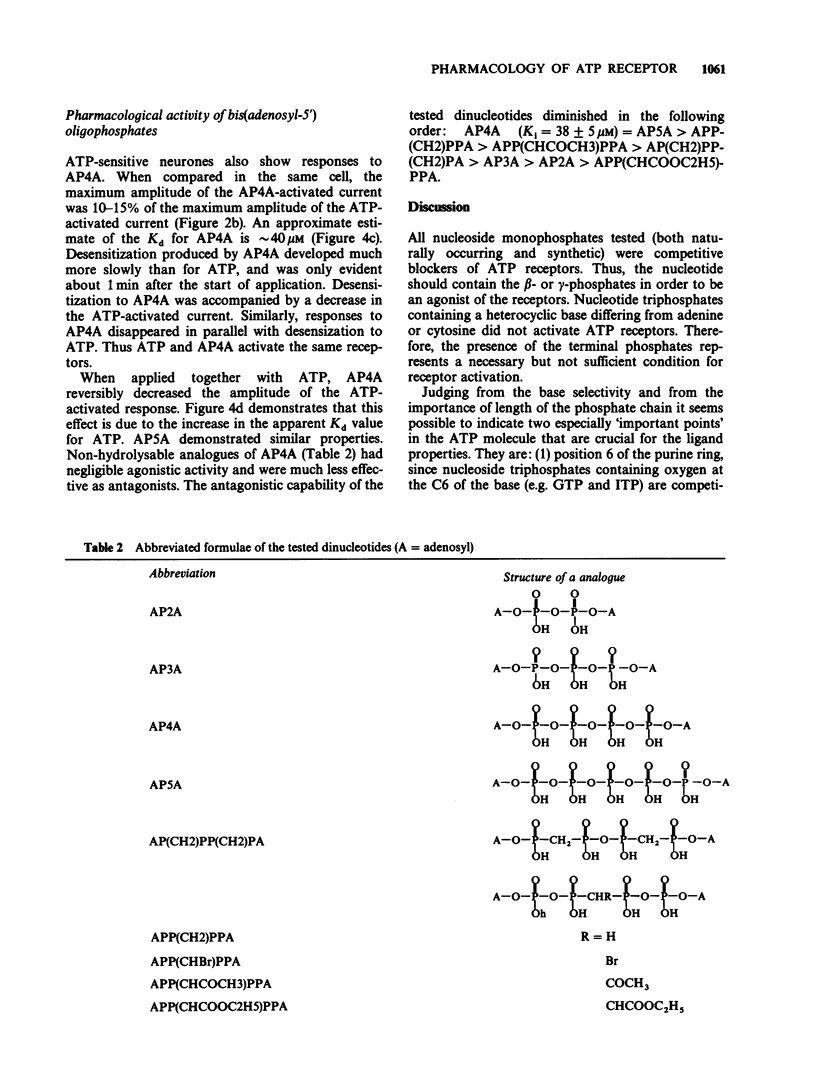
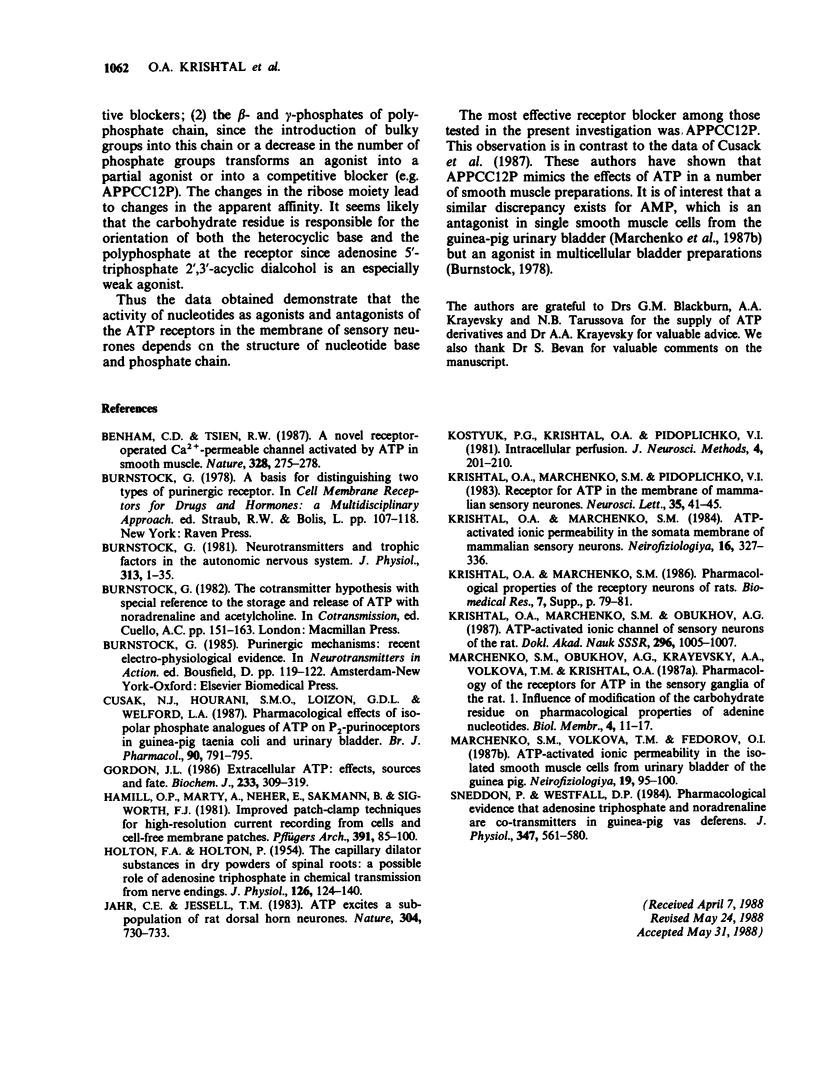
Selected References
These references are in PubMed. This may not be the complete list of references from this article.
- Benham C. D., Tsien R. W. A novel receptor-operated Ca2+-permeable channel activated by ATP in smooth muscle. Nature. 1987 Jul 16;328(6127):275–278. doi: 10.1038/328275a0. [DOI] [PubMed] [Google Scholar]
- Burnstock G. Review lecture. Neurotransmitters and trophic factors in the autonomic nervous system. J Physiol. 1981;313:1–35. doi: 10.1113/jphysiol.1981.sp013648. [DOI] [PMC free article] [PubMed] [Google Scholar]
- Cusack N. J., Hourani S. M., Loizou G. D., Welford L. A. Pharmacological effects of isopolar phosphonate analogues of ATP on P2-purinoceptors in guinea-pig taenia coli and urinary bladder. Br J Pharmacol. 1987 Apr;90(4):791–795. doi: 10.1111/j.1476-5381.1987.tb11233.x. [DOI] [PMC free article] [PubMed] [Google Scholar]
- Gordon J. L. Extracellular ATP: effects, sources and fate. Biochem J. 1986 Jan 15;233(2):309–319. doi: 10.1042/bj2330309. [DOI] [PMC free article] [PubMed] [Google Scholar]
- HOLTON F. A., HOLTON P. The capillary dilator substances in dry powders of spinal roots; a possible role of adenosine triphosphate in chemical transmission from nerve endings. J Physiol. 1954 Oct 28;126(1):124–140. doi: 10.1113/jphysiol.1954.sp005198. [DOI] [PMC free article] [PubMed] [Google Scholar]
- Jahr C. E., Jessell T. M. ATP excites a subpopulation of rat dorsal horn neurones. Nature. 1983 Aug 25;304(5928):730–733. doi: 10.1038/304730a0. [DOI] [PubMed] [Google Scholar]
- Kostyuk P. G., Krishtal O. A., Pidoplichko V. I. Intracellular perfusion. J Neurosci Methods. 1981 Oct;4(3):201–210. doi: 10.1016/0165-0270(81)90032-7. [DOI] [PubMed] [Google Scholar]
- Krishtal O. A., Marchenko S. M., Pidoplichko V. I. Receptor for ATP in the membrane of mammalian sensory neurones. Neurosci Lett. 1983 Jan 31;35(1):41–45. doi: 10.1016/0304-3940(83)90524-4. [DOI] [PubMed] [Google Scholar]
- Marchenko S. M., Obukhov A. G., Kryshtal' O. A. Odinochnye ATF-aktiviruemye kanaly sensornykh neironov krysy. Dokl Akad Nauk SSSR. 1987;296(4):1005–1007. [PubMed] [Google Scholar]
- Marchenko S. M., Volkova T. M., Fedorov O. I. ATF-aktiviruemaia ionnaia provodimost' v izolirovannykh gladkomyshechnykh kletkakh mochevogo puzyria morskoi svinki. Neirofiziologiia. 1987;19(1):95–100. [PubMed] [Google Scholar]
- Sneddon P., Westfall D. P. Pharmacological evidence that adenosine triphosphate and noradrenaline are co-transmitters in the guinea-pig vas deferens. J Physiol. 1984 Feb;347:561–580. doi: 10.1113/jphysiol.1984.sp015083. [DOI] [PMC free article] [PubMed] [Google Scholar]


